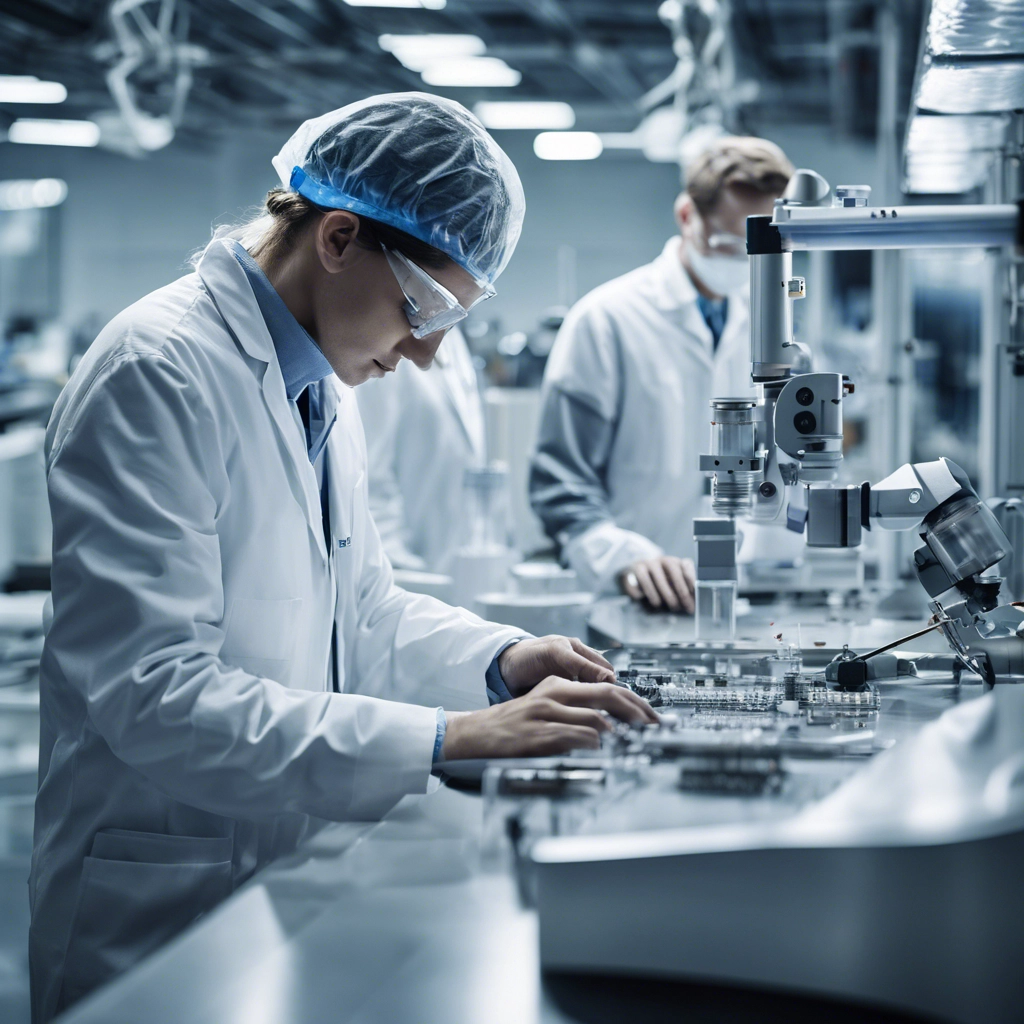Table of Contents
Imagine pulling a seemingly perfect steak off the grill, and the next thing you notice is that it’s still raw inside. Or, something worse, think about serving an undercooked chicken at a dinner party. But how do we actually figure out that food is now cooked to perfection? That’s where the role of the probe thermometer comes in.
However, just like every device becomes less efficient over time, probe thermometers are no different. Over time, these tiny devices can lose their accuracy due to wear and tear, exposure to extreme temperatures, or simply because of regular use. This is why recalibrating these probes is important to get accurate readings and prevent worst-case scenarios like the example of food we discussed above.
To calibrate these devices, you can follow these steps:
- Gather necessary tools
- Choose the calibration method
- Perform the calibration
- Adjust the thermometer
- Test for accuracy and repeat when necessary
If you are confused about how to actually do this, then this article is for you. Read on to learn everything from how to do each step and how often you should calibrate probe thermometers.
What is a Probe Thermometer?
A probe-thermometer is a helpful device that lets us prepare our food with perfection by preventing overcooking or undercooking. This device effectively detects heat levels in foods, liquids, and other substances. Unlike the infrared or surface thermometers, which measure external temperatures, the probe thermometer provides more accurate readings by sensing the internal temperatures. This makes it a handy tool when it comes to cooking, brewing, scientific applications, and even some industrial processes.
Common Types of Probe Thermometers
Now that you know what a probe thermometer is, let’s discuss its types. There are various types, and each is created differently for a specific use. Types that are available are:
- Digital Probe Thermometer:This one features a display for easy reading, and it often has preset temperature alarms.
- Dial (Analog) Probe Thermometers:These are traditional thermometers with a dial that shows temperature readings.
- Thermocouple Thermometers:This thermometer is highly sensitive and fast and is commonly used in professional kitchens.
- Oven-Safe Probe Thermometers:This is designed to stay inside the food while being cooked in the oven.
- Instant-Read Probe Thermometers: They also provide quick readings, but they are not meant to stay in the food during cooking.
Where They are Used
If you are thinking that these probes are only used in the kitchen, then you are wrong. Here are some other places that you will find them in action.
- Home and Professional Kitchens:This is the most common use of these probes, where they are utilized to cook the feet with perfection and to meet safety standards.
- Scientific Labs:They are used in labs for monitoring temperatures in chemical reactions and experiments.
- HVAC and Industrial Applications:They are also useful for measuring air and surface temperatures in heating and cooling systems.
How to Calibrate Your Probe Thermometer: 5 Easy Steps
Before we actually dive into the steps, you should know that calibration is not something complicated. However, someone who is doing it for the first time may get it wrong. Make sure you read all the steps mentioned below thoroughly to perform your calibration and start getting accurate readings again.
1. Gather Necessary Tools
There are types of calibration methods, and for each, you will need different tools. Here are the tools for each method:
Tools for Ice Bath Method
- A tall glass
- Ice cubes
- Cold water
Tools for Boiling Point Method
- A pot
- Boiling water
- Tongs (to hold the thermometer safely)
Tools for Manual Calibration
- A small screwdriver (for analog thermometers)
- Manufacturer instructions (for digital thermometers)
2. Choose Your Calibration Method
Now, with two different methods, you may be wondering which one you should go with. This can also be a confusing choice when you don’t know the end results. However, it doesn’t have to be confusing when you know the differences between the two. Here is a comparison of these two calibration methods:
| Feature | Ice Bath Method | Boiling Water Method |
| Ideal Use Case | Cchecking low-temperature accuracy | Checking high-temperature accuracy |
| Target Temperature | 0°C (32°F) | 100°C (212°F) at sea level |
| Best For | Refrigeration checks, food safety inspections, sous vide cooking | Grilling, frying, boiling, and high-heat cooking |
| Accuracy | Highly reliable if done correctly | Reliable but affected by altitude |
| Environmental Factors | Not affected by altitude | The boiling point varies with altitude |
| Ease of Use | Simple & requires only ice and water | Requires boiling water and heat protection |
| Time Required | Quick (2-3 minutes) | Slightly longer (5-10 minutes) |
| Recommended Frequency | Weekly for professional kitchens, monthly for home use | Less frequent but useful for high-heat applications |
When to Use Each Method
Now that you know the differences between these two, let’s discuss when each method would be best in certain cases.
- Use Ice Bath Method: If you mostly cook cold foods, store ingredients or use the thermometer for sous vide cooking.
- Use the Boiling Water Method: If you frequently grill, fry, or cook at high temperatures. However, with this method, you should not forget that the boiling point of water varies based on altitude. For example, higher altitudes boil water at a lower temperature.
3. Perform the Calibration
It’s time to get the job done, let’s break this down into steps so you can perform each calibration method easily. Here are the steps for both methods:
Steps for Ice Bath Method
- Fill a tall glass with cold water and add ice cubes
- Stir gently and let it sit for about 1 – 2 minutes
- Insert the thermometer probe so it’s submerged, make sure it’s not touching the sides or bottom
- Wait for the reading to get stabilized (usually about 30 seconds)
- If the thermometer doesn’t read 32°F (0°C), it needs adjustment
Steps for Boiling Water Method
- Bring a pot of water to a rolling boil
- Use tongs to hold the probe in the water and make sure it doesn’t touch the sides or bottom
- Wait for a steady reading (30 seconds)
- If it doesn’t read 212°F (100°C) (or your local boiling point), adjust accordingly
4. Adjust the Thermometer
Now that you have checked the reading, it’s time to fine-tune your thermometer. Here is how you can do this:
How to Tweak Calibration Screw
- You can use a small screwdriver to turn the adjustment screw until the reading matches 32°F (0°C) or 212°F (100°C)
- Make sure to go gentle because overtightening it can damage the internal components of the thermometer
Digital Thermometer Recalibration Process
For digital thermometers, the process is quite easy and simple. Usually, most digital models come with a reset or recalibration button. Some models may require pressing and holding the button while adjusting the temperature manually.
5. Test for Accuracy and Repeat When Necessary
Now, when the whole process is done, it’s time to check if you actually did it right. Here is how you can verify accuracy after calibration:
Verifying Calibration
- Repeat the ice bath or boiling water test to confirm if the adjustments worked
- If it’s still off, you need to recalibrate again
When to Replace a Faulty Thermometer
Just like any device, there comes a time when you have no other option but to replace the thermometer. Here are some signs that indicate the need for replacement:
- If the thermometer won’t calibrate despite the adjustments
- If reading fluctuates or they never stabilize
- If it is physically damaged, for instance, a cracked display or a broken probe
How Often Should You Calibrate Your Probe Thermometer?
Even if your thermometer is of the best quality, then you should know that even the best ones drift over time. This is simply due to the nature of this device and because it’s continually being used in extreme conditions. Therefore, regular calibration is the key to maintaining its accuracy. Here is how often you should be performing calibration.
Recommended Calibration Frequency
- Daily or weekly if it’s being used in a commercial setting
- Monthly for home use or if you use it for grilling
- After drops or extreme temperature exposures like deep frying or freezing
Factors that Affect Calibration Needs
Here are factors that affect calibration needs:
Frequent use: More use means more calibration
Temperature Swings: If it’s being used in a mix of temperatures like freezing to boiling, it can mess with the accuracy
Mechanical Impact: If you drop it or subject it to a mechanical impact, it can mess up its accuracy, which means it takes time to recalibrate.
Best Practices for Maintaining Accuracy
Here is how you can maintain the accuracy of probe thermometers:
- Store in a protective case to prevent damage
- Avoid extreme heat or cold when they are not being used
- Clean the probe properly to prevent residue build-up
Conclusion
Just following a few simple steps can help you get your probe thermometer readings accurate again. The tools required for both methods are not anything that you need to visit a utility store for. You can find all the required tools in your home kitchen, too. So, all you need is to follow the steps mentioned above properly, and you can calibrate anytime you want.
There is no point in using probe thermometers if they are providing you inaccurate readings. A miscalibrated thermometer can lead to overcooked or undercooked food and other issues in the applications it’s being used for. Regular calibration can prevent this from happening and ensure food safety, which is specifically critical in professional kitchens.
While all probe thermometers require recalibration at some point, you should get the ones that are easy to calibrate and are built for accuracy. At DTTTEK, we have been manufacturing such probe thermometers for years. Whether your need is for grilling, baking, or simply handling food safety checks, explore our solutions for all your temperature-sensing requirements.


